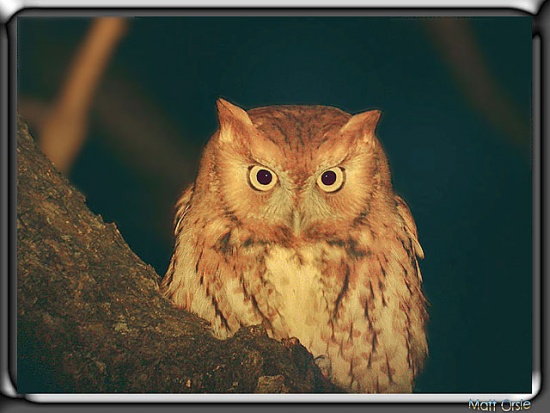Nomdeploom (talk | contribs) m (Eliminate Linnaeus taxonomy (Opus editors' decision)) |
m (photo location) |
||
| Line 1: | Line 1: | ||
;Megascops asio | ;Megascops asio | ||
| − | [[Image:Eastern_Screech_Owl.jpg|thumb|550px|right|Photo by wv_vireo]] | + | [[Image:Eastern_Screech_Owl.jpg|thumb|550px|right|Photo by wv_vireo <br />Location: Charles Town, [[West Virginia]], USA]] |
==Identification== | ==Identification== | ||
Revision as of 21:30, 24 October 2008
- Megascops asio
Identification
A small owl at 8.5 inches, Eastern Screech Owls occur in in 2 color morphs: red and gray. The gray morph is the most widespread over the eastern USA, but the red morph is frequent in the southeast. In Florida they are intermediate or brown.
Distribution
East North America from east Montana, the Great Lakes, and south Ontario to Florida, the Gulf of Mexico, and further south to Tamaulipas in northeast Mexico.
Taxonomy
This and almost all Screech Owls in the Americas have previously been considered to belong in the same genus (Otus) as the European and Asian Scops-Owls, but a reassignment to Megascops have been accepted by among other authorities, the American Ornithologists' Union.
Habitat
Their breeding habitat is deciduous or mixed woods in eastern North America. Usually solitary, they nest in a tree cavity, either natural or excavated by a woodpecker; they will also use nesting boxes. They are strictly nocturnal, roosting during the day in cavities or next to tree trunks.
Behaviour
These birds wait on a perch on low limbs in open woods and along forest edges and swoop down on prey; they may also catch insects in flight. They mainly eat large insects and small rodents, as well as small birds. They are active at night or near dusk, using their excellent hearing and night vision to locate prey.




